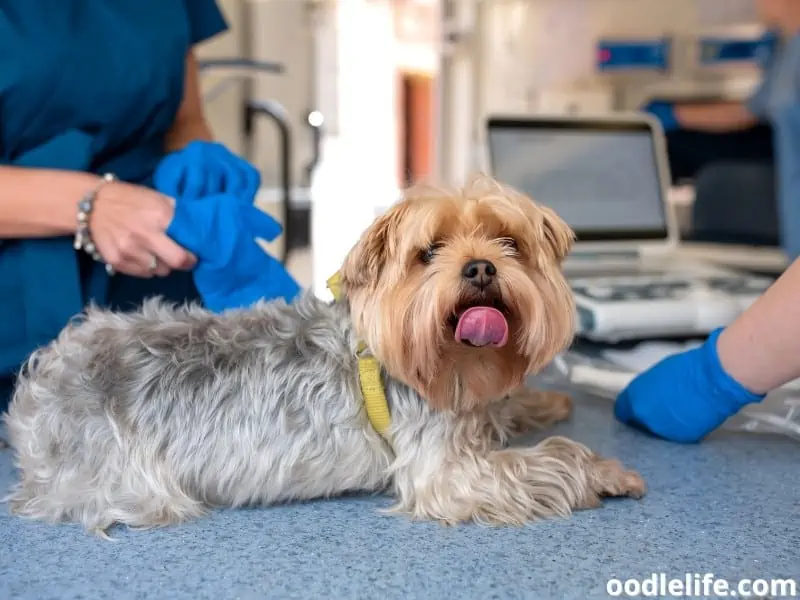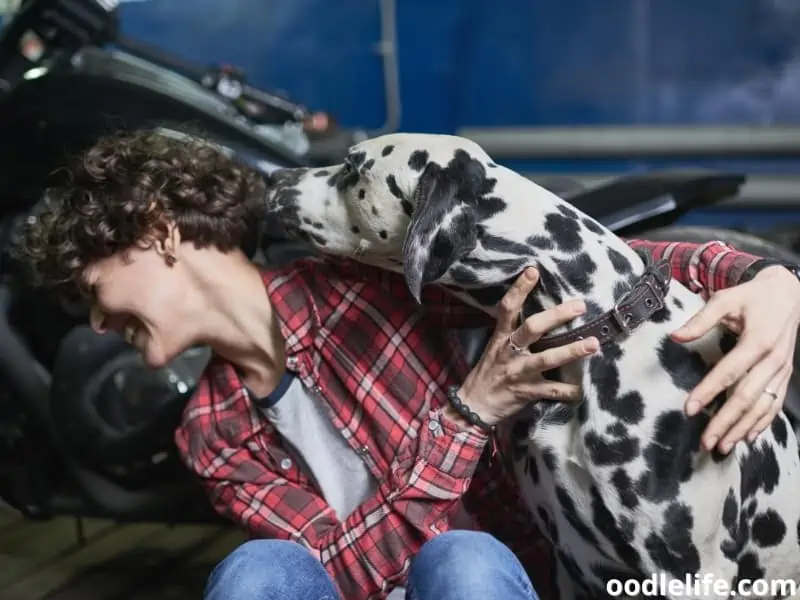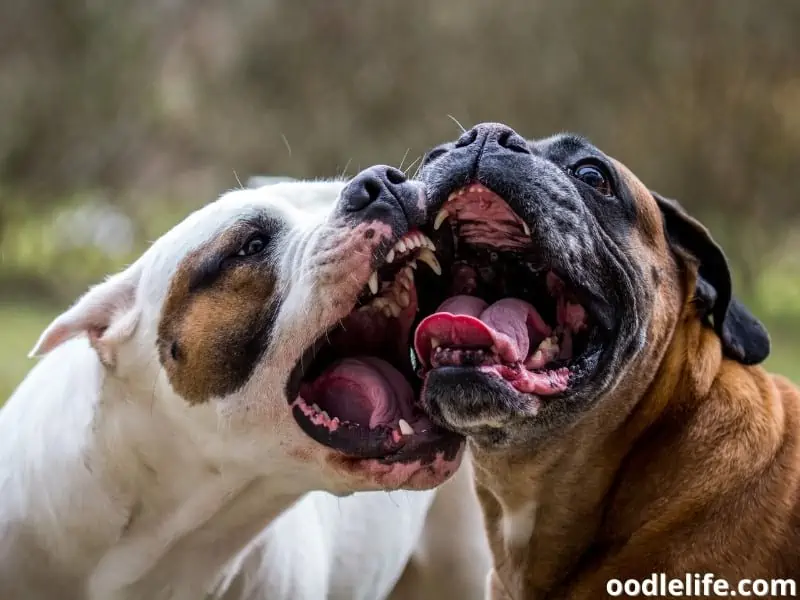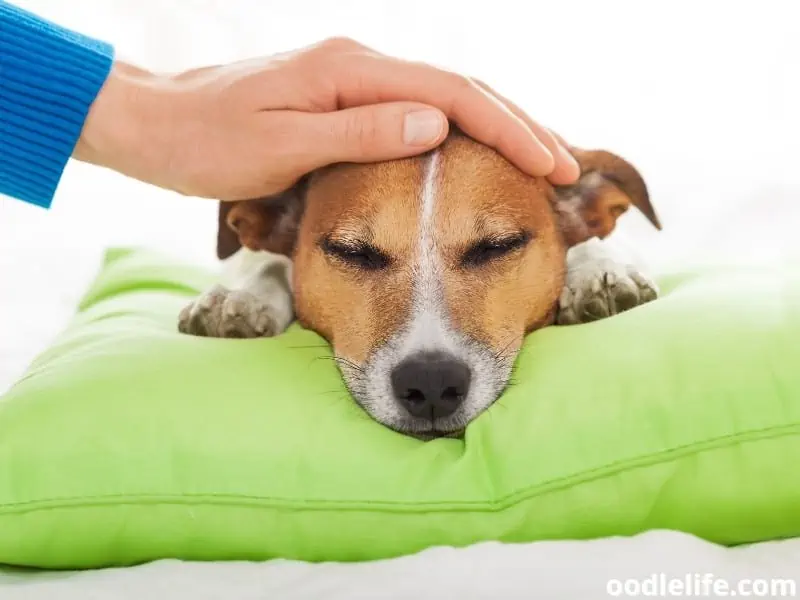5 Signs Your Dog Needs To Be Neutered (2024 Update)
We love our dogs and want what’s best for them. We are responsible for making many decisions for the health and future of your pet, such as staying up to date on vaccinations, regular dental cleaning, and routine checkups.
However, when it comes to spaying and neutering, it is a deeply personal decision that brings a lot of benefit to your dog. Some folks don’t want to alter their animals while others steadfastly will desex their pets the moment it is time.

In this blog post, we’ll look at neutering, why you should do it, and how to tell if your dog would benefit from it.
What Is Neutering And Why You Should Do It?
Neutering is when a male dog undergoes a small surgery where a veterinarian will surgically remove his testicles so that he won’t be able to impregnate a female dog and produce puppies. This is also called “the big snip.”

It will also lower the risk of your dog developing fatal diseases such as testicular and prostate cancer, and it controls the pet population. Some dog owners believe this is a cruel thing to do while others deem it necessary.
For most dogs, most veterinarians suggest waiting until your dog is ready for puberty, which is about when they are six to eight months old. Larger dogs might have to wait till they are about 12 months old.
Even though this small surgery isn’t easy on puppies, it helps eliminate many risk concerns for them and behavioral issues that they may develop later on in life. It will take them a few days to heal but they also might feel some pain in their surgical incision site.
Your dog will need extra love and care these days as it takes them time to adjust and get over the initial discomfort. Some dogs may need to wear a cone around their neck to prevent them from licking the area.
Benefits of Neutering
There are many benefits of neutering your pooch, especially if you don’t plan on breeding them and only have them as pets. After neutering, a male dog’s testosterone levels will significantly decrease and after the operation, the dog will become calmer and is less likely to get into dog fights.

He’ll also mark territories less often because he won’t feel the need to tell everyone he is around.
Some physical health benefits of neutering dogs are that it prevents some severe diseases such as testicular cancer and benign prostatic hyperplasia.
Testicular cancer is actually the second most common cancer that affects unneutered dogs. Generally, dogs that have been neutered live a longer and healthier life, which is something that all dog owners want for their beloved pooches!
Research also proves that the dogs that have had the “big snip” are safe from many infectious diseases like parvo and are less likely to suffer from distemper.
It is also less common that they will be victims of trauma and injury, such as getting into fights with other dogs or getting hit by a car. Neutered dogs are less likely to roam out of the house trying to find a mate.
The most crucial benefit is that once your dog is neutered, he won’t be able to have puppies. Pet overpopulation is a big issue as millions of dogs end up in animal shelters each year.
Signs Your Dog Needs To Be Neutered
Humping
The high level of testosterone hormones in a male dog often leads to behavioral changes that they start to exhibit on a daily basis. Specifically, the male dog will sense the female dog’s pheromones nearby and start to show signs that it wants to mate.

This particular behavior of unneutered dogs is triggered when it’s around a female dog in heat. Humping is a common behavior in dogs that is embarrassing for the owner when their dog does it in public.
Humping for dogs isn’t always a form of sexual behavior, as it can also be done instinctually or out of boredom. If the dog isn’t in contact with a female dog, he will tend to hump everything like the air, blankets, toys, and sometimes other human and dogs.
This can become a very big problem because it’s annoying for the owner and it can cause fights amongst the dogs and even cause unwanted pregnancies. Once the testicles are removed, there is no hormonal trigger to the humping problem.
Trying to Escape
When your dog scents a female in heat nearby, he will find a way to escape no matter how much you try and stop them. He will jump over any fence and squeeze through any place to try and find their mate.

This is because the level of testosterone is at a peak and the intact male dog will roam around everywhere, following a female dog’s scent in order to impregnate her and produce puppies.
This is problematic because a single male dog can get many female dogs pregnant, which means loads of unwanted pregnancies and puppies.
Urine Marking
If your dog is peeing in the house, he is trying to mark his territory. In human terms, it means “if I pee on it, it’s mine” in dog language. It doesn’t always have to be a form of canine sexual behavior, although it can be.

Marking territory isn’t always an issue when they do it outdoors but when they start peeing on objects inside the house it becomes problematic. This is more common when a household has two unneutered dogs living together.
Since neutered dogs don’t have the need to compete with each other, they tend to mark less and will unlikely pee in the house.
Aggressive or Dominant Behavior
Testosterone is a hormone in male dogs that can make them dominant and aggressive in nature. They become very territorial of their space and people and often pick fights with other dogs.

They also are very competitive with other pets. This high level of testosterone has a lot of negative effects on your dog’s overall temperament. Lowering the level of testosterone through neutering solves many problems in dogs such as negative and aggressive behavior.
Your dog will also not roam around looking for mates and stay clear of other dominant behaviors. Although aggressive behavior is often a sign of bad upbringing and insufficient socializing, it is important to try and find the underlying cause of the problem.
Before taking your pet for training, talk to your vet and see if there is a medical issue behind the behavior or if your dog needs to be neutered.
Health Problems
Behavior signs that your dog needs to be neutered are noticeable and can be easy to recognize, but health problems aren’t always easy to diagnose because they are invisible to the naked eye.

During its lifetime, a male intact dog can come across many health issues that are associated with its genitalia and reproductive organs. These health issues are usually hidden until the male dog reaches its senior years.
Some dogs, due to their genetic background, are more prone to certain diseases. The worse the genes, then the higher the chance of developing a life-threatening disease.
Some of these diseases are:
Testicular Cancer
This cancer is one of the most dangerous and life-threatening diseases in unneutered dogs. It has the potential to spread very quickly to its neighboring tissues and in most cases it is lethal.
Unneutered dogs tend to develop this type of cancer in their senior years and genetics plays a very large part in this. Removing the testicles altogether is eliminating any and all chances of getting this cancer. No testicles, no testicular cancer!
Prostatic Disease
A male dog’s prostate is a gland within the urinary tract and it is regulated by testosterone hormones. This gland produces chemical compounds that are found in a male dog’s semen.
This disease in dogs is linked to an enlargement of the prostate gland which, as it swells, puts pressure on the surrounding parts of the urinary tract.
An enlarged prostate may put some pressure on the urethra, which in turn causes incontinence. This also may start to interfere with the digestive system which then makes it hard to pass stool for the dog.
Cryptorchidism
This is a condition in male dogs where one testis is stuck within the dog’s abdomen. This causes the dog to only have one testis in his scrotum.
Normally, the testicular falls down into the scrotum by the time the puppy is two weeks old. But if this doesn’t happen by the time the puppy is eight weeks old, the male puppy is called a cryptorchid.
This condition does not show any acute signs but can become dangerous over time. Eventually, it may require surgical removal.
Scrotum Rashes
The scrotal skin in male dogs is a very sensitive area. This is because it is usually covered in less hair than the rest of the dog’s body. When both testes are inside the scrotum, the delicate skin is stretched and exposed to its surroundings.
This rash normally develops when the dog plays outside a lot or licks its genitals often. When a dog is neutered, the testes are removed from the scrotum, and once healed; the skin is inverted and flattened down, which prevents rashes and cuts in that area.